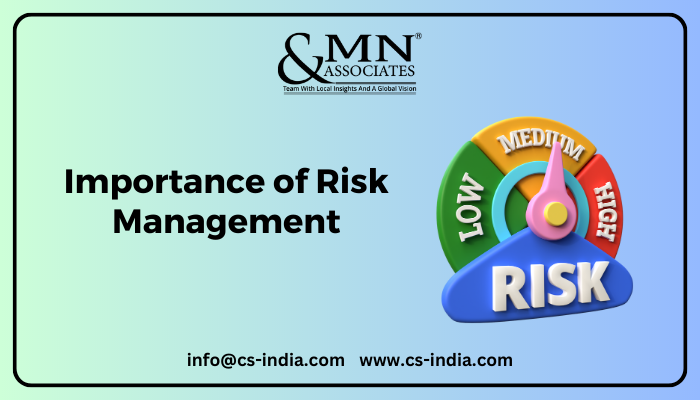Discovering the Importance of Risk Management for Effective Decision-Making Approaches
In the elaborate globe of company, Risk Management emerges as a critical factor in the decision-making procedure. The ability to determine prospective threats and opportunities, and plan as necessary, can lead to the distinction in between success and failing. With tools such as SWOT and PESTEL, companies are outfitted to make educated options, cultivating strength and versatility in an ever-changing setting. Wondering just how this works? Let's unbox the dynamics further.
Comprehending the Idea of Risk Management
Risk Management, a vital component in decision-making, is commonly misconstrued or oversimplified. Risk Management entails organized and disciplined techniques, utilizing information and informative assessments. From economic uncertainties, lawful obligations, tactical Management errors, to crashes and natural catastrophes, it addresses various dangers - importance of risk management.
The Function of Risk Management in Decision-Making Processes
In the realm of calculated planning and company operations, Risk Management plays an important function in decision-making procedures. Risk Management therefore comes to be a vital tool in decision-making, aiding leaders to make educated options based on an extensive understanding of the threats entailed. Risk Management serves as a crucial element in the decision-making processes of any type of company.

Just How Risk Management Enhances Strategic Preparation
In the context of calculated preparation, Risk Management plays an essential role. Launching with the identification of prospective threats, it even more prolongs to the execution of Risk reduction actions. The duty of Risk Management is vibrant yet not fixed, as it demands consistent surveillance and adjusting of strategies.
Identifying Prospective Dangers

Executing Risk Reduction
Risk reduction strategies can range from Risk evasion, Risk transfer, to run the risk of decrease. Each method must be customized to the certain Risk, considering its prospective impact and the organization's Risk resistance. Effective Risk reduction requires a deep understanding of the Risk landscape and the prospective effect of each Risk.
Tracking and Readjusting Techniques
Though Risk reduction is an important action in tactical preparation, continuous tracking and change of these approaches is equally crucial. This ongoing process permits companies to identify new threats and reassess existing ones, ensuring the carried out strategies remain reliable in the ever-changing business atmosphere. It likewise gives a possibility to assess the success of the Risk Management actions, permitting adjustments to be made where necessary, additional enhancing tactical planning. Efficient tracking and change require the usage of analytics and key efficiency signs (KPIs) to gauge efficiency. These devices give valuable data-driven understandings that can inform tactical decision-making. Monitoring and adjusting Risk Management techniques is an important element for enhancing a company's strength and critical preparation.
Situation Researches: Successful Risk Management and Decision-Making
In the world of company and finance, effective Risk Management and decision-making commonly function as the pillars of thriving ventures. One such entity is an international oil firm that mitigated financial loss by hedging against varying oil rates. In an additional instance, a tech start-up thrived by identifying and accepting high-risk, high-reward strategies in an unstable market. A global financial institution, encountered with governing uncertainties, effectively browsed the situation through positive Risk evaluation and vibrant decision-making. These cases highlight the value of sharp Risk Management in decision-making procedures. It is not the lack of Risk, but the Management of it, that commonly sets apart effective business from unsuccessful ones. These situations emphasize the vital reference role of Risk Management in tactical decision-making. importance of risk management.
Tools and Techniques for Effective Risk Management
Browsing the detailed labyrinth of Risk Management calls for the ideal collection of tools and strategies. These devices, such as Risk signs up and warmth maps, aid in recognizing and examining prospective dangers. Strategies include both quantitative approaches, like level of sensitivity evaluation, and qualitative methods, such as SWOT analysis. These aid in prioritizing risks based upon their prospective influence and probability. Risk action strategies, a vital part of Risk Management, involve accepting, avoiding, transferring, or mitigating threats. Monitoring and managing threats, with normal audits and testimonials, make sure that the techniques continue to be effective. With these tools and techniques, decision-makers can navigate the facility landscape of Risk Management, thereby facilitating educated and reliable decision-making.
Future Fads in Risk Management and Decision-Making Techniques
As we check out the huge landscape of Risk Management, it ends up being obvious that the tools and methods made use of today will continue to evolve. Future trends point towards an enhanced dependence on modern technology, with expert system and artificial intelligence playing substantial functions. These innovations will enable companies to forecast potential threats with greater precision and make even more enlightened choices. In addition, there will certainly be an expanding focus on resilience, not simply in taking care of risks yet likewise in bouncing back from unfavorable scenarios. click over here The idea of Risk society, where every participant of an organization is mindful and entailed in Risk Management, will obtain extra prestige. These patterns advertise an even more aggressive and comprehensive technique in the direction of Risk Management and decision-making.
Verdict

Risk Management therefore ends up being an essential device in decision-making, helping leaders to make enlightened options based on a comprehensive understanding of the threats entailed. Risk mitigation methods can vary from Risk avoidance, Risk transfer, to run the risk of decrease (importance of risk management). Effective Risk reduction requires a deep understanding of the Risk landscape and the prospective impact of each Risk. Risk response techniques, a crucial part of Risk Management, involve accepting, staying home clear of, moving, or mitigating risks. The idea of Risk society, where every member of an organization is mindful and involved in Risk Management, will get more importance